You’ve witnessed it previously – a tree, once flourishing and teeming with vitality, gradually deteriorating, its foliage becoming yellow. The hidden cause is frequently too much watering, quietly suffocating the tree’s roots with too much water.
Recognize the signs of overwatering and understand the factors that affect a tree’s water requirements, so you can prevent overwatering and ensure the health and longevity of your trees.
But how can you tell if your tree is suffering from too much water? And more importantly, how can you prevent it? Let’s dive in and explore.
What we cover
ToggleRecognizing overwatering in trees
Overwatering is a common issue faced by trees in both urban and rural landscapes. However, the signs of overwatering are often subtle and can be easily overlooked.
An overwatered tree can display a range of symptoms, from the obvious like a wet area around the tree to the subtle, like fragile leaves that break easily or stunted growth with yellowing leaves.
It is important to be aware of the signs of overwatering and take steps to address them.
Wet area around the tree
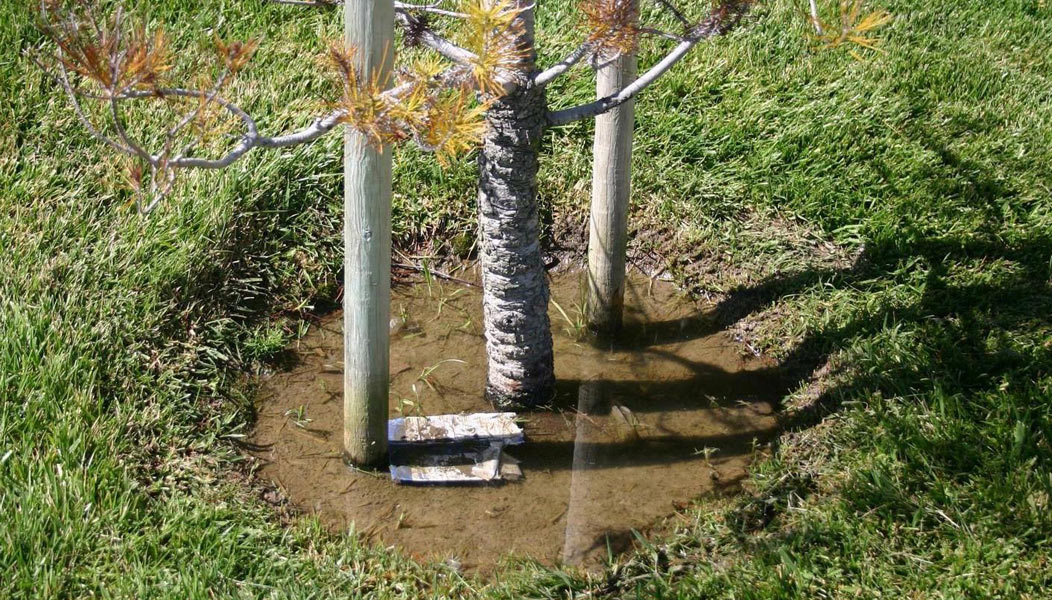
A wet area around your tree is a clear sign that your tree is getting too much water. This could be due to overwatering, poor drainage, or even soil compaction.
But why is this an issue? Well, when the soil around a tree is constantly wet, it can suffocate the tree’s roots, leading to a lack of oxygen and potentially causing root rot and fungal infections.
Root rot and fungal infections can cause serious damage to your tree, leading to stunted growth.
Fragile leaves that break easily
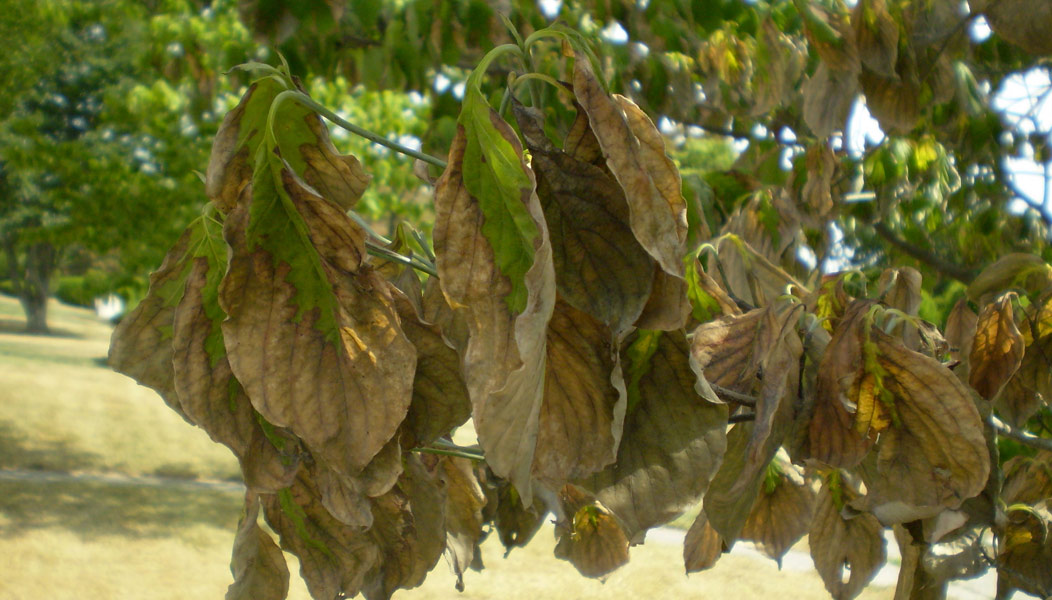
Fragile leaves that break easily can be a sign of an overwatered tree. This may seem counterintuitive – shouldn’t a well-watered tree have robust, healthy leaves?
In reality, overwatering can cause the leaves to become fragile due to increased water pressure within them.
This is one of the subtle clues that your tree may be getting excess water, possibly due to a nearby rain spout.
Stunted growth and yellowing leaves
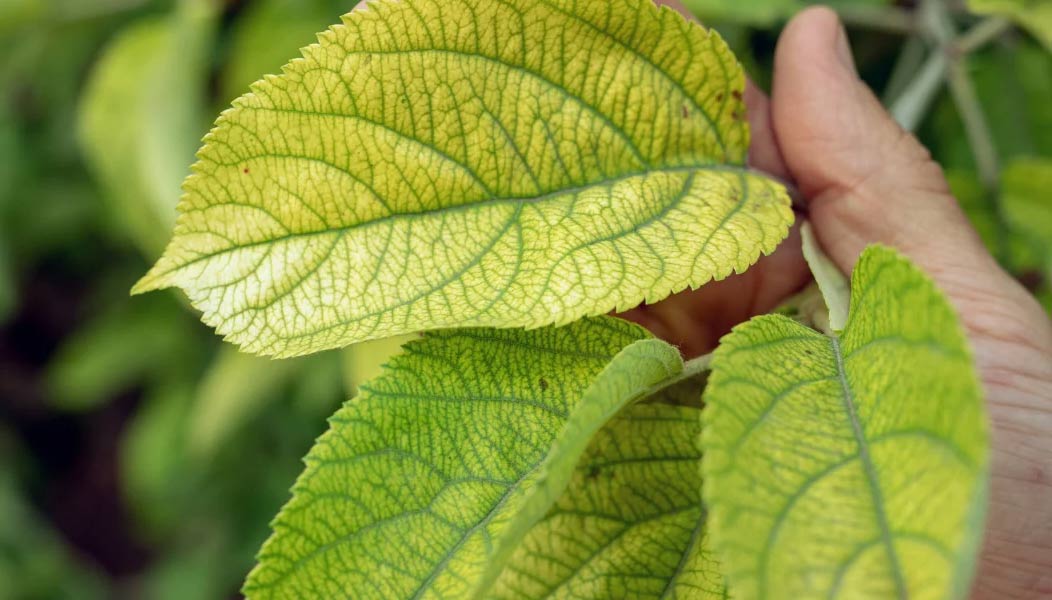
Stunted growth and yellowing leaves are two more signs of overwatering. When a tree receives too much water, it can hinder its growth and cause the leaves to turn yellow.
This can be particularly detrimental for young trees, which need the right balance of water and oxygen to grow properly.
So, if you notice that your tree’s growth is stunted and the leaves are turning yellow, it may be an indication that you’re watering your tree too much.
The dangers of overwatering trees
Overwatering trees can lead to a slew of problems, from root rot and fungal infections to a decrease in oxygen supply, ultimately leading to a general decline in the tree’s health.
When a tree is overwatered, the soil becomes saturated, filling the air pockets that would normally allow the roots to breathe. This can lead to a lack of oxygen, resulting in less photosynthesis and less growth.
In severe cases, overwatering can even lead to the death of the tree.
Root rot and fungal infections
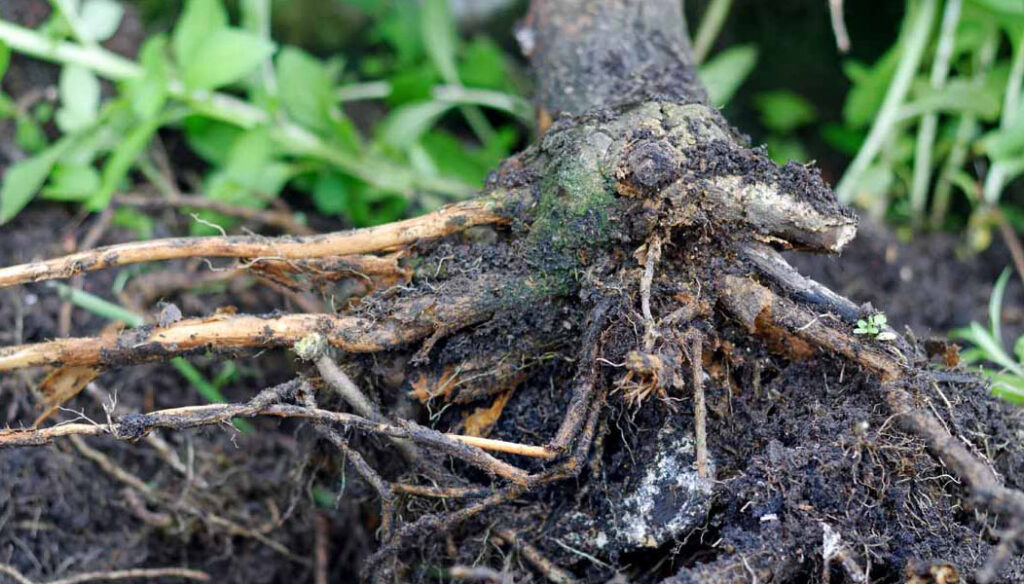
One of the most severe consequences of overwatering is root rot and fungal infections. When a tree is overwatered, the roots may become waterlogged and deprived of air, leading to the onset of root rot.
The roots may appear soft, slimy, and dark, instead of their usual firm and white.
In time, this can lead to a fungal infection, which can cause severe damage to the tree and may even lead to its death.
Reduced oxygen supply
Another danger of overwatering is the reduced oxygen supply to the tree’s roots. As mentioned earlier, when the soil is saturated with water, the air pockets that allow the roots to breathe are filled with water.
This results in not enough oxygen for the roots, which can cause them to suffocate, leading to less photosynthesis and less growth.
If left unchecked, this can lead to the tree withering and eventually its demise at the base of the tree.
Weakened tree health
Overwatering doesn’t just affect the roots of the tree – it can also weaken the overall health of the tree. When a tree is overwatered, it may struggle to absorb the necessary nutrients from the soil, leading to a lack of nutrition.
This can result in weakened tree health, making the tree more susceptible to disease and pests.
Factors affecting tree water requirements
While it’s clear that overwatering can lead to a host of problems, it’s also important to remember that each tree is unique.
The water requirements of a tree can vary greatly depending on a variety of factors, including the age and size of the tree, the specific needs of the species, and the environmental conditions in which the tree is planted.
These factors should be taken into consideration when determining how much water a tree needs.
Tree age and size
The age and size of a tree can greatly affect its water needs. Younger trees generally require more frequent watering than older trees, as they are still establishing their root systems.
Similarly, larger trees will require more water than smaller trees due to their larger root systems.
Understanding the age and size of your mature trees can help you tailor your watering practices to their specific needs.
Species-specific needs
Just as people have different dietary needs, different tree species also have different water requirements. Some species are more drought-tolerant and require less water, while others may require more regular watering.
Understanding the specific needs of your tree species can help prevent overwatering.
Environmental factors
Environmental factors can also play a significant role in a tree’s water requirements. Factors such as temperature, humidity, wind, soil type, and location can all affect how much water a tree needs.
For instance, a tree located in a windy area may require more water than a tree in a sheltered location. Understanding these factors can help you tailor your watering practices to your tree’s specific environmental conditions.
Proper watering techniques for healthy trees
So, how do you ensure that you’re watering your tree correctly and not over-watering it? There are a few key techniques that can help ensure that your tree receives the right amount of water.
These include deep watering with soaker hoses, adjusting the watering frequency for new and established trees, and regularly checking the soil moisture levels.
Deep watering with soaker hoses is a great way to ensure that your tree is healthy.
Deep watering with soaker hoses
Deep watering is a technique that involves slowly and evenly watering the roots of the tree, rather than the leaves. This can be achieved by using soaker hoses, which deliver water directly to the soil at a slow and steady rate.
By watering in this way, you ensure that the water is absorbed by the roots rather than evaporating from the surface of the leaves.
Deep watering is an effective way to ensure that your trees get the water they need to stay healthy. Watering trees deeply can help them develop strong root systems and resist drought conditions.
Watering frequency for new and established trees
The frequency of watering is also crucial. New and established trees have different watering needs – while a new tree requires daily watering, established trees require watering only once a week until their root systems are fully established.
Understanding the watering needs of your tree at different stages of its life can help prevent overwatering.
Checking soil moisture levels
Checking the soil moisture levels regularly is another important step in preventing overwatering. You can do this by inserting a long screwdriver into the soil. If the screwdriver does not penetrate to a depth of 6 inches, then your tree may need more water.
This simple technique can help ensure that you’re providing your tree with the right amount of water.
How to help an overwatered tree recover
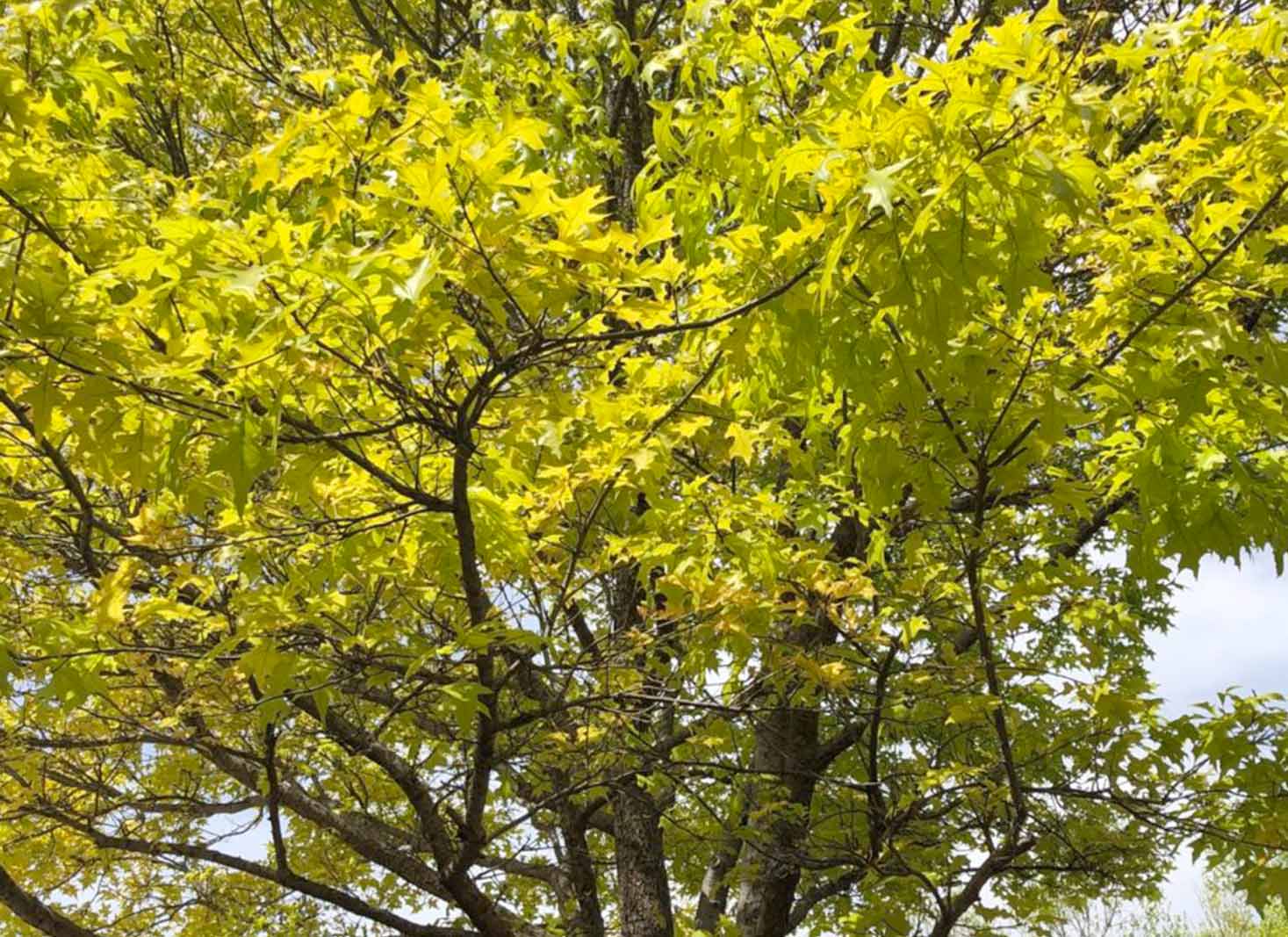
So what happens if you’ve overwatered your tree? Fear not – there are steps you can take to help your overwatered tree recover.
This includes adjusting your watering practices, improving the drainage and soil conditions, and consulting an arborist if necessary.
Making these changes can help your tree recover from overwatering, promote new growth, and get back to its healthy state.
Adjusting watering practices
The first step in helping an overwatered tree recover is adjusting your watering practices. This may seem obvious, but it’s an important step.
If you’ve been overwatering your tree, try reducing the amount of water you give it, and allow the soil to dry out completely before watering again.
Improving drainage and soil conditions
Improving the drainage and soil conditions around your tree can also help it recover from overwatering.
If the soil around your tree is constantly wet, consider ways to improve the drainage, such as adding compost to the soil or installing a drainage system.
You can also consider relocating your tree to a location with better drainage.
When to consult an arborist
If you’ve tried adjusting your watering practices and improving the drainage and soil conditions but your tree is still struggling, it may be time to consult an arborist. An arborist can assess your tree’s condition and provide advice on how to help it recover.
Remember, each particular tree is unique and may require a different approach to recovery, which is why proper tree care is essential.
Preventing overwatering: tips and best practices
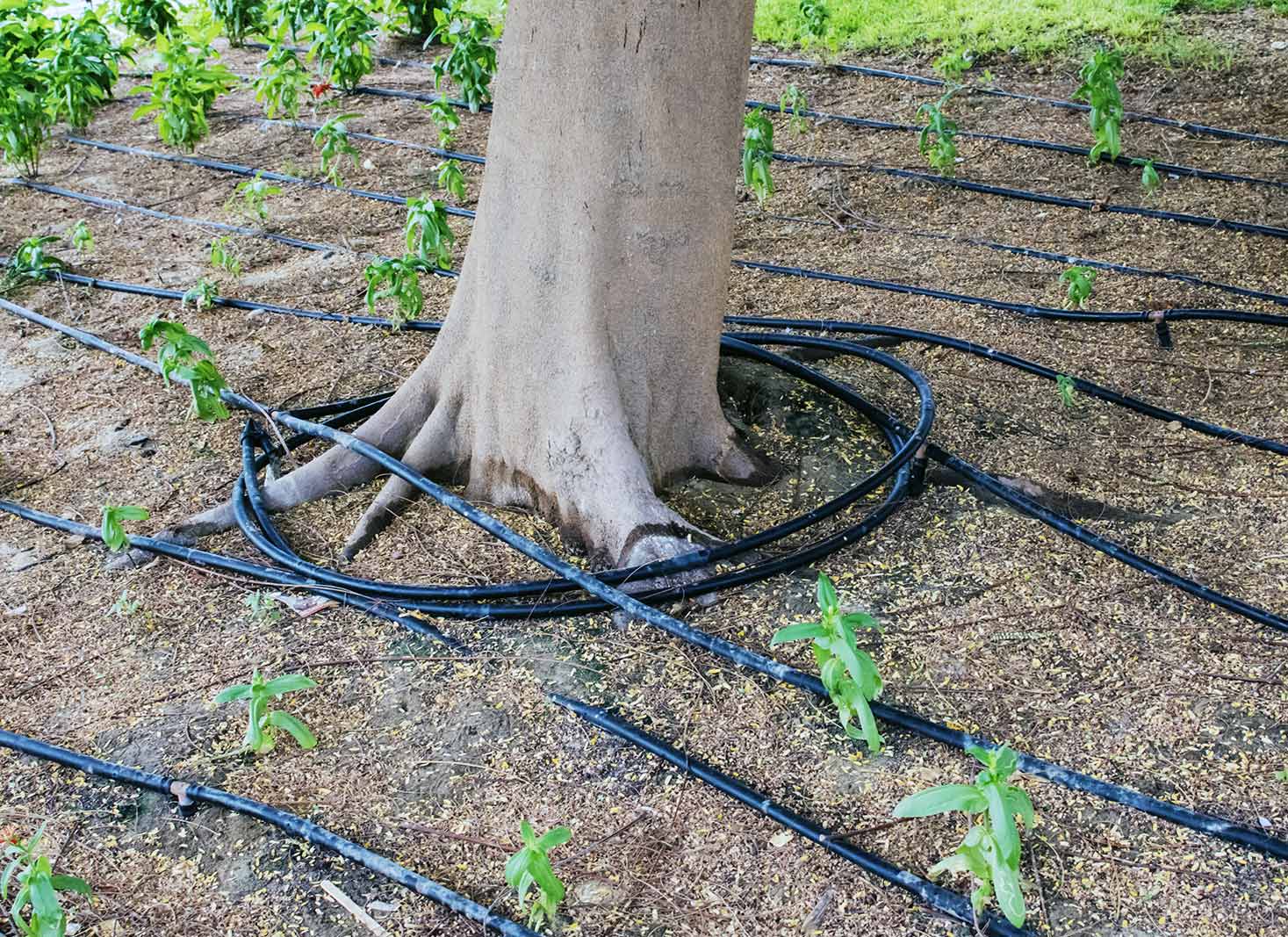
Prevention is always better than cure. Here are some tips and best practices to prevent overwatering your trees in the first place.
This includes using drip irrigation systems, considering the planting location, and understanding your tree’s specific needs.
Drip irrigation systems are a great way to ensure that your trees are getting the right amount of water.
Drip irrigation systems
Drip irrigation systems are a great way to prevent overwatering. These systems deliver water directly to the soil at a slow and steady rate, ensuring that the water is absorbed by the roots rather than evaporating from the surface of the leaves.
By using a drip irrigation system, you can ensure that your tree receives the right amount of water, preventing overwatering.
Planting location considerations
The location where you plant your tree can also affect its water requirements. For instance, a tree planted in a windy area may require more water than a tree in a sheltered location.
Similarly, if a tree is planted in clay soil, it may require less frequent watering than a tree planted in sandy soil.
By considering the planting location, you can better tailor your watering practices to your tree’s specific needs.
Understanding your tree's specific needs
Lastly, understanding your tree’s specific needs is crucial in preventing overwatering. Different tree species have different water requirements, and understanding these can help you tailor your watering practices accordingly.
Additionally, factors such as the age and size of the tree, and the environmental conditions, can also affect a tree’s water requirements. By understanding your tree’s specific needs, you can ensure that it receives the right amount of water.
FAQ's
It can take a few seasons for a tree to recover from overwatering, but with the right care and attention, it can make a full recovery. Monitor your trees closely as there may be ongoing signs of distress that could arise months later.
Pay attention to the soil moisture levels and adjust your watering schedule accordingly.
Make sure to water deeply and infrequently, allowing the soil to dry out between waterings. Prune away any dead or damaged branches and leaves to help the tree.
When a tree is overwatered, oxygen-rich air pockets are flooded, resulting in suffocation and drowning of the roots. This can lead to root rot, fungus, wilting or yellowing leaves, eventually killing the tree.
Reduce the water supply to the tree, and give it deeper watering less often. Check for other sources of water, like a leaky hose or irrigation system, and conduct the screwdriver test before watering.
Working with a tree care professional to ensure your trees get regular maintenance can also help revive stressed trees.
Overwatering can be identified by wilting flowers, and droopy leaves with a yellowish hue, and brownish colors.
Stunted slow growth accompanied by yellowing leaves with old and new leaves falling off is another symptom of overwatering.
Tree age, size, species-specific needs, and environmental conditions all play a role in determining a tree’s water requirements.
These factors must be taken into account when deciding how much water to give a tree. For example, a young tree may need more water than an older tree, and a tree in a dry climate may need more water.



